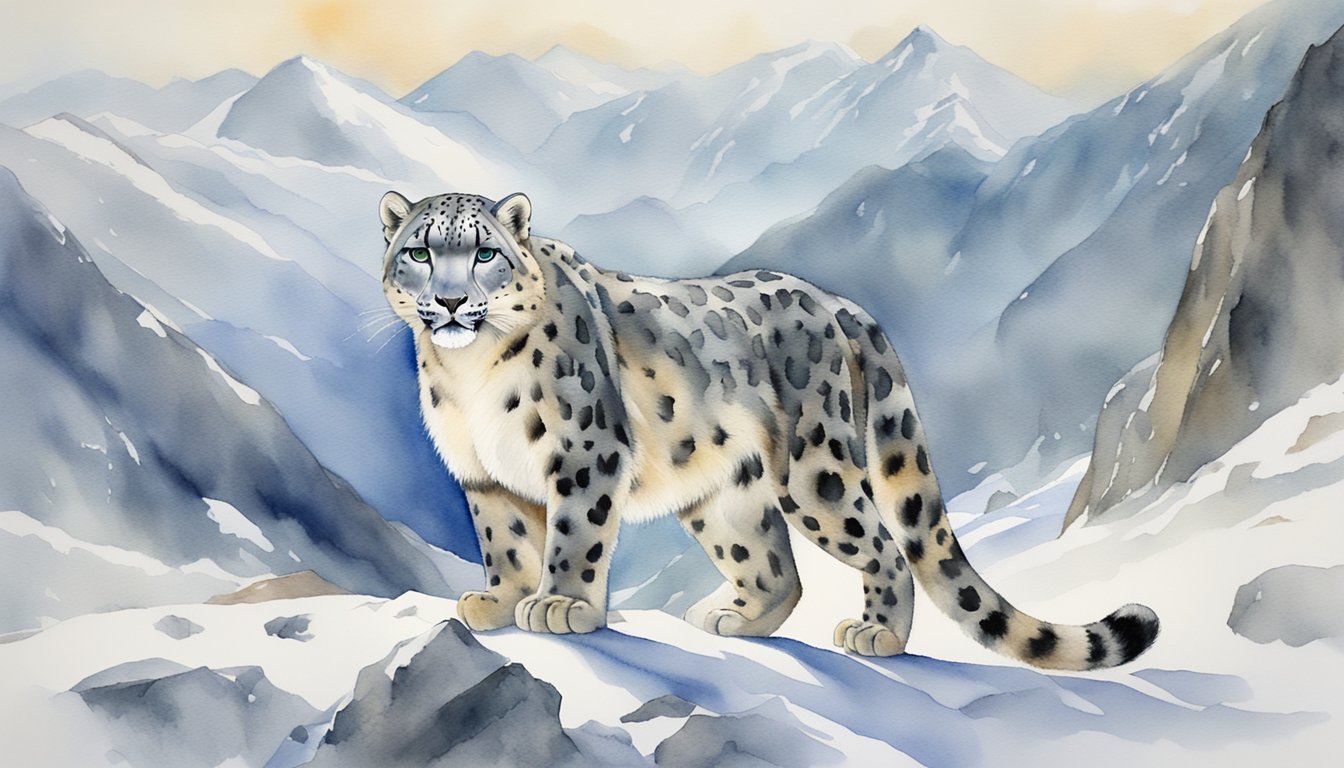Snow leopards are remarkable creatures with adaptations that enable them to thrive in high-altitude environments. Their physical characteristics are suited for cold climates, while their habitat range extends across several Central Asian countries.
Physical Attributes
The snow leopard, known scientifically as Panthera uncia or Uncia uncia, is distinguished by its thick fur, which keeps it insulated against harsh cold. The fur is covered in distinctive dark spots and rosettes that aid in camouflage against the rocky terrain. This magnificent animal has a long tail, which can be as much as 90 cm in length, serving multiple purposes; it helps maintain balance on rugged landscapes and can wrap around the body for added warmth. Snow leopards have large, wide paws that act like snowshoes, preventing them from sinking into the snow and giving them a significant advantage when chasing prey in their mountainous ecosystem.
Habitat Range
Snow leopards are found in the mountain ranges of Central Asia. These mountainous habitats range from Afghanistan and Kazakhstan to Russia and Mongolia, spanning elevations from 3,000 to 4,500 meters. Their terrain is rough and includes rocky outcrops and steep cliffs. Snow leopards exhibit a vast territorial range, often occupying territories that span several dozen square kilometers. Despite their broad geographic distribution, they are elusive and their exact population numbers are difficult to determine, but estimates suggest there are between 3,920 and 6,390 individuals in the wild.
Conservation and Threats

The survival of the snow leopard is a critical concern due to a variety of threats that have contributed to its status as an endangered species. Efforts to preserve these majestic animals are widespread, involving numerous organizations and strategies.
Endangered Status
Snow leopards are currently classified as ‘vulnerable‘ by the International Union for Conservation of Nature (IUCN), with an estimated population of only 4,000-6,500 remaining in the wild. The change from ‘endangered’ to ‘vulnerable’ is a sign of some progress but does not lessen the urgency of conservation efforts.
Human Impact
Human activities have had profound impacts on the snow leopard’s habitat and population. Poaching and the illegal trade in fur and bones have significantly threatened their survival. Moreover, the snow leopards’ natural habitat is shrinking due to human settlement and increased agriculture. Climate change also poses a future risk, altering the fragile ecosystems where these cats reside. Conservation initiatives driven by organizations like the World Wildlife Fund (WWF), and legal protection measures are essential to combat these threats.

